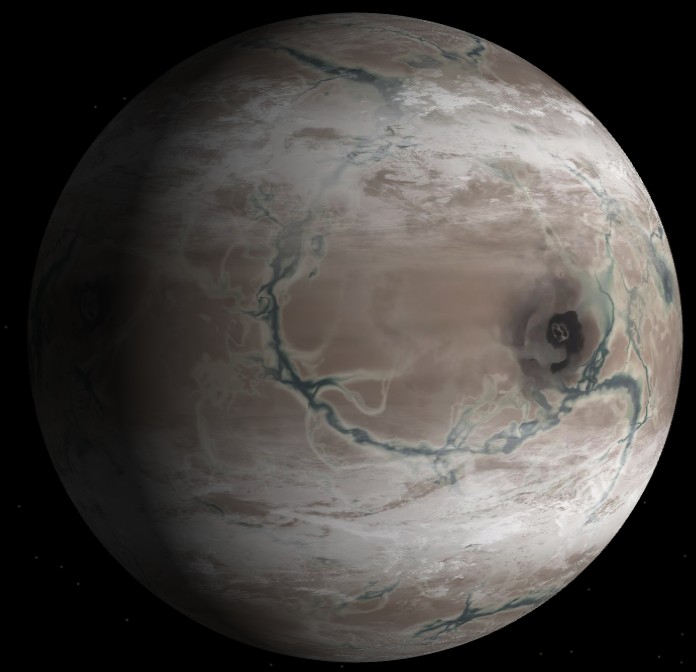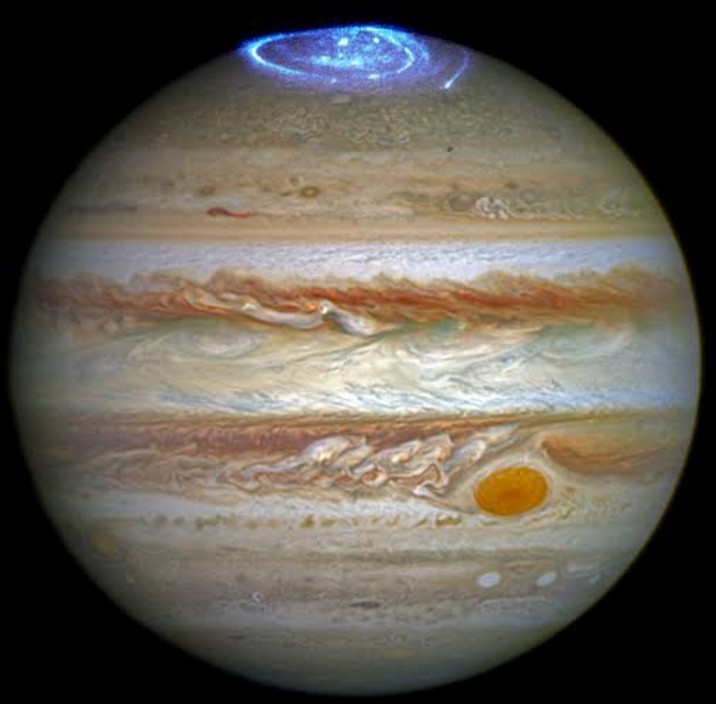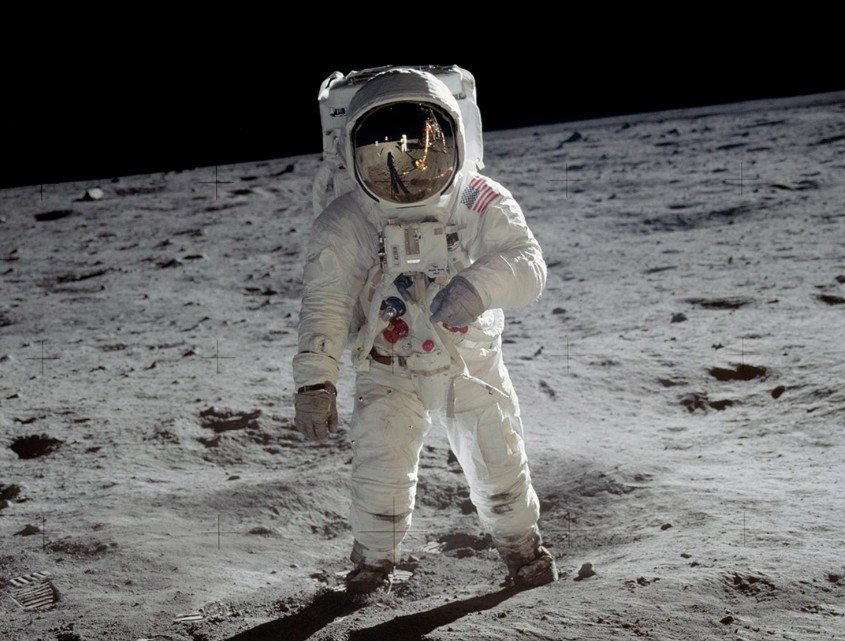NASA has been in the space exploration scene from the beginning, it was founded back in 1958. Over the years, they have accomplished a lot. From landing the first person on the moon, do hopefully reaching Mars in the future.
In this post, we will be sharing 25 NASA posters that show space progress over the years.
Cool NASA Posters
1. Voyager 1: into Interstellar Space

Typically a star-like Sun will have a huge influence on its surroundings. And, it can cover a huge area this way. However, there is a place where the influence of the sun or any star ends.
That is the start of the interstellar medium. Simply put, interstellar space is the section of the space that is located between the stars.
Voyager 1 probe was launched by NASA on Sept 5, 1977 to explore space. It was August 25, 2012 when the Voyager 1 has entered Interstellar space.
This makes it the most distant man-made object from Earth. And, interestingly, it is still operating.
When the Voyager 1 left our solar system, it was about 11 billion miles or 18 billion km from the Sun. In the Astronomical unit, it was 122 AU.
For your information, 1 AU is equal to – distance between the sun and the earth. The time it would take you to reach the Voyager 1 would be equal about 61 round trips from Earth to Sun.
2. Search for Another Earth

About 20 years ago, NASA scientists discovered the 1st exoplanet which was named 51 Pegasi b and was thought as a similar to earth planet at the time.
Since then, NASA is constantly looking for more Earth-like planets in the universe. They have found thousands of exoplanets all around the universe in the process. However, not all of them eventually were similar enough to our Earth.
They are still searching for another Earth. Interestingly, NASA has discovered a planet named the Kepler-452b on 23 July 2015.
This planet is almost identical to Earth. For instance, it takes 385 days to revolve around its star. However, it is about 50% bigger in radius than the Earth.
The planet is about 1400 light-years away from our solar system. Due to its striking similarity to Earth, it is also known as Earth’s Cousin and Earth 2.0.
3. The Blue Marble

On December 7, 1972, NASA’s Apollo 17 crew took a picture of the Earth from about 18,000 miles or 29,000 km afar.
They were on a mission to land on the moon. Later, this particular image would have gone to become the most replicated photo of our Earth in history.
NASA crew used their Hasselblad camera to capture this mind-blowing picture. With this picture, we humankind have seen the Earth from a distance in its full glory for the first time in history.
4. First Reusable Manned Orbital Spacecraft

You have seen Space X using their reusable rockets on a regular basis. But this is not the first time we have seen a reusable spacecraft.
The first reusable spacecraft was the Space Shuttle Columbia. It was launched on April 12, 1981, from Cape Canaveral, Florida.
5. First Photograph of the Entire Solar System

Thanks to NASA’s Voyager 1 for giving us the first portrait of our solar system. It was 14th February 1990, when Voyager 1 took a series of pictures of our entire solar system.
And, this was the first time we have seen our solar system from a distance. This series also contains the famous ‘Pale Blue Dot’ image.
6. First Spacecraft to Land on Mars

After conquering the moon, we are now looking to conquer our neighboring planet Mars. A lot of privately held commercial companies like Space X, Blue Origin, etc. are trying to pave the way to build a human colony on Mars.
But we have landed on Mars a long time ago. NASA’s Viking 1 lander was the first man-made object to land on the surface of Mars.
7. 433 Eros Exploration

Since 1898, the 433 Eros asteroid was at the center of attraction to astronomers worldwide.
Because it was the first NEA or ‘Near-Earth asteroid’ discovered by us. However, later, NASA has sent it’s famous NEAR Shoemaker probe to explore the 433 Eros.
First, the probe flew past the asteroid back in 1998. Then it did the same back in 2000 when it took a few high-quality images.
Finally, on 12 February 2001, the NEAR Shoemaker probe landed on the 433 Eros. As a result, it was the first time when an NEA was explored by a man-made spacecraft.
8. The Cassini-Huygens Mission

It was October 15th 1975 when NASA first launched the Cassini-Huygens mission. The objective of the mission was primarily to know more about Saturn.
The probe was en route for about 6 years and 261 days, then it reached Saturn where it spent 13 years orbiting the ring giant. In 2004, the Cassini entered the orbit of Saturn.
It helped us knowing extensively about the rings, moons, and the planet itself. NASA terminated the mission on September 15th 2017.
That time, Cassini passed through Saturn and its rings multiple times. Later, it entered the atmosphere of Saturn.
As a result, it was destroyed ( intentionally ) after serving for about 20 years. This is known as the Mission ‘Grand Finale’ of Cassini.
9. Arrokoth: The Kuiper Belt Object

If you go beyond Neptune, then you will find an area where it is full of different icy particles, and celestial bodies like comets.
It is thought that most of the comets and some of the satellites of a few planets are also formed in this space. You will also find a few dwarf planets like Haumea, Makemake, and Pluto in there.
However, NASA’s New Horizons Spacecraft recently captured a unique image of a celestial body from the Kuiper belt area.
We have never seen anything like this before. Because it is the most distant object from Earth that was explored.
This is about 21 miles wide and it was visited by the New Horizons spacecraft on January 1, 2019. Later, it was named ‘Arrokoth’.
10. Landing a Rover on Mars

On 26th November 2011, NASA has launched the Curiosity Rover for exploring Mars. Later on 6th August 2012, it landed on Mars. To this day the Rover still explores Mars.
This is one of the most technologically advanced rover to explore another planet.
Curiosity Rover has been sending very significant data about Mars on a regular basis.
Additionally, it is also famous for sending beautiful pictures of Mars. At the time of writing, the rover is on Mars and doing its thing.
11. Passing by Jupiter

NASA sent the space probe named Juno in 2011 to explore Jupiter. It is one of the most unique space probes to ever lunch.
Because it uses solar arrays to get power from the sun. Whereas almost all the previous space probes by NASA were nuclear powered. The first time Juno entered on a polar orbit of Jupiter was back in 2016.
Since then, Juno is working tirelessly to provide us the data and crucial information about Jupiter and its moons.
After the mission, it will be destroyed with the help of the gravity of Jupiter like Cassini.
The mission Juno will estimate to cost over 1.13 billion USD over the course. Juno also sent a lot of close-ups of Jupiter. Before Juno, we couldn’t get this close to the giant planet.
12. Pluto Encounter

We knew a little about the dwarf planet, Pluto. However, this changed when NASA launched the New Horizons space probe.
It was July 13th 2015 when the New Horizons spacecraft was just 476,000 miles or 768,000 km away from Pluto.
It was 2006 when NASA launched the New Horizons. It took around 9 years and 3 billion miles to reach Pluto for the spacecraft.
Then it took a lot of close up photos of Pluto. This was the first time when we saw Pluto this well in the History of Mankind.
13. First Plant Grown in Space

In 2015, astronauts in the ISS ( International Space Station ) grown and harvested red romaine lettuce.
It was the first-ever grown plant in space. It took 15 months to grow the lettuce with the help of a system called Veg-01.
14. One Year in Space

NASA wanted to experiment with the impacts of long-duration space-duration on the human body.
They have created the ISS year-long mission. The main members of this mission were:
- Scott Kelly
- Mikhail Korniyenko.
They lived in space for about 342 days straight. Astronaut Scott Kelly has an identical twin on Earth named astronaut Mark Kelly.
NASA would later compare both of their health and psychological condition. The data will help us to explore the deep outer space using manned spacecraft in the future.
15. The International Space Station

We all know the ISS. It is located in lower Earth orbit. Although, this is now a joint project between 5 space agencies.
| United States | Canda |
| Japan | Russia |
| EU |
NASA started the ISS program before everyone. One of the main purposes of ISS is to provide us an international laboratory for experiments that can only be done in the space.
We can’t replicate the environment of space on Earth. The ISS was launched back in 1998.
It has been in space for over 21 years. However, the size and shape of the ISS were not always like the one we see today.
It was improved gradually. Without the ISS, it wouldn’t be possible to know all the things we know about space.
16. The First Six Women

NASA has selected 6 women astronaut candidates back in 1978. They were:
- Margaret Rhea Seddon
- Shannon W. Lucid
- Sally K. Ride
- Anna L. Fisher
- Judith A. Resni
- Kathryn D. Sullivan.
This event was history in the making as this was NASA’s 1st class of female astronauts.
17. Carrying the S0 Truss Structure

As we have already told you that, the ISS was not built in a day. Also, it was not built on Earth as well.
Because it was impossible to send something this big into space at once. Thus the scientists built it in the orbit piece by piece over a course of time.
Now, the S0 truss is responsible for forming the backbone of the ISS. It was taken to space on 8th April 2002.
And now it is attached on top of the Destiny Laboratory Module in the ISS. It was a huge milestone for NASA to carry this to the ISS.
18. Hubble Space Telescope

Hubble Telescope was launched to the low Earth orbit in 1990. Since then, it has given us some of the most awe-inspiring data, images, and moments in the history of space exploration.
Hubble can see about 10 to 15 billion light-years away.
19. The Handshake

On July 17th 1975, 3 NASA astronauts communicated with 2 other astronauts from Russia.
Both the Apollo and the Soyuz spacecraft docked with each other on that day. Where the historic handshake between a Russian and an American astronaut took place.
20. Skylab

Before the ISS, NASA launched the Skylab in May 1973 for using it as a space station. It was the first USA space station in history.
The Skylab was in the space for about 24 weeks. This paved the way to the current day ISS.
21. First American to Walk in Space

Edward Higgins White II was the first USA citizen to walk in space. He accomplished this great feat on 3rd June 1965. He was a NASA astronaut, US Air Force officer, and an aeronautical engineer.
22. First American in Space

Although Ed White was the first American to walk on space, he was not the first person to be in space from America.
It was Alan Shepard who went to space on 5th May 1961. Later in 1971, he also walked on the moon.
23. First American to Orbit Earth
John Glenn was the first American to orbit the Earth. Because he was piloting the Friendship 7 mission on 20th February 1962.
He was in the orbit for about 5 hours and orbited the Earth 3 times.
24. Project Mercury

NASA started exploring space with the start of Project Mercury. The main goal of the program was to send a man to the Earth’s orbit and return him safely to Earth.
The Project Mercury was initiated in 1958. And it was continued till 1963. That makes it the first spaceflight program of the USA to explore the space.
25. Conquering the Moon

NASA was behind the first manned mission that landed on the moon. It was July 21st 1969 (@ 02:56 UTC) when Neil Armstrong stepped on the moon and made history.
Since then, NASA sent 5 manned mission to land on the moon. To this day, there are 24 astronauts who landed on the surface of the moon successfully.
Wrap Up
NASA has helped us understand outer space better. Day by day, we are going to learn more about the universe.
Thanks to NASA and other similar space agencies that are working for a better future. Due to their effort, we have seen this much progress in the space research filed over the years.
Maybe we will also conquer Mars and other outer planets in the near future.
So, which NASA Poster did you like the most? You can share them with us in the comments down below!
